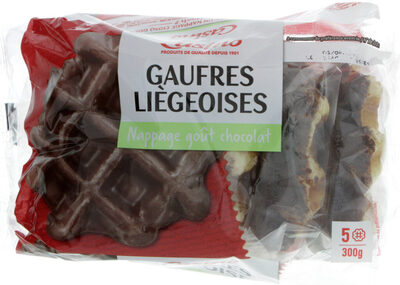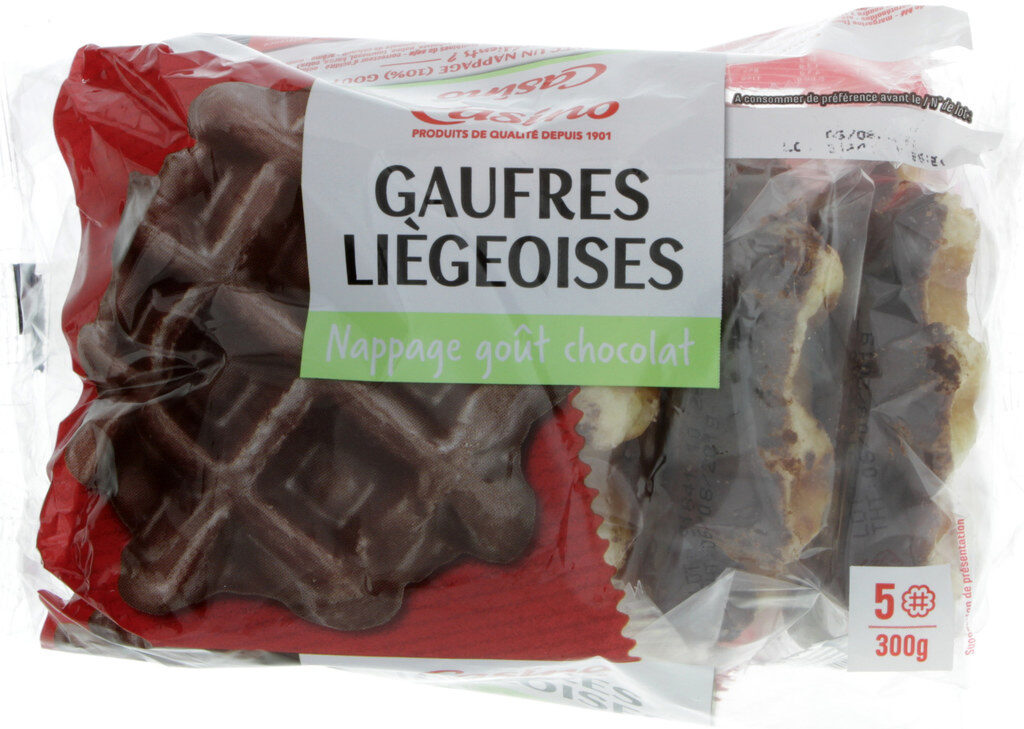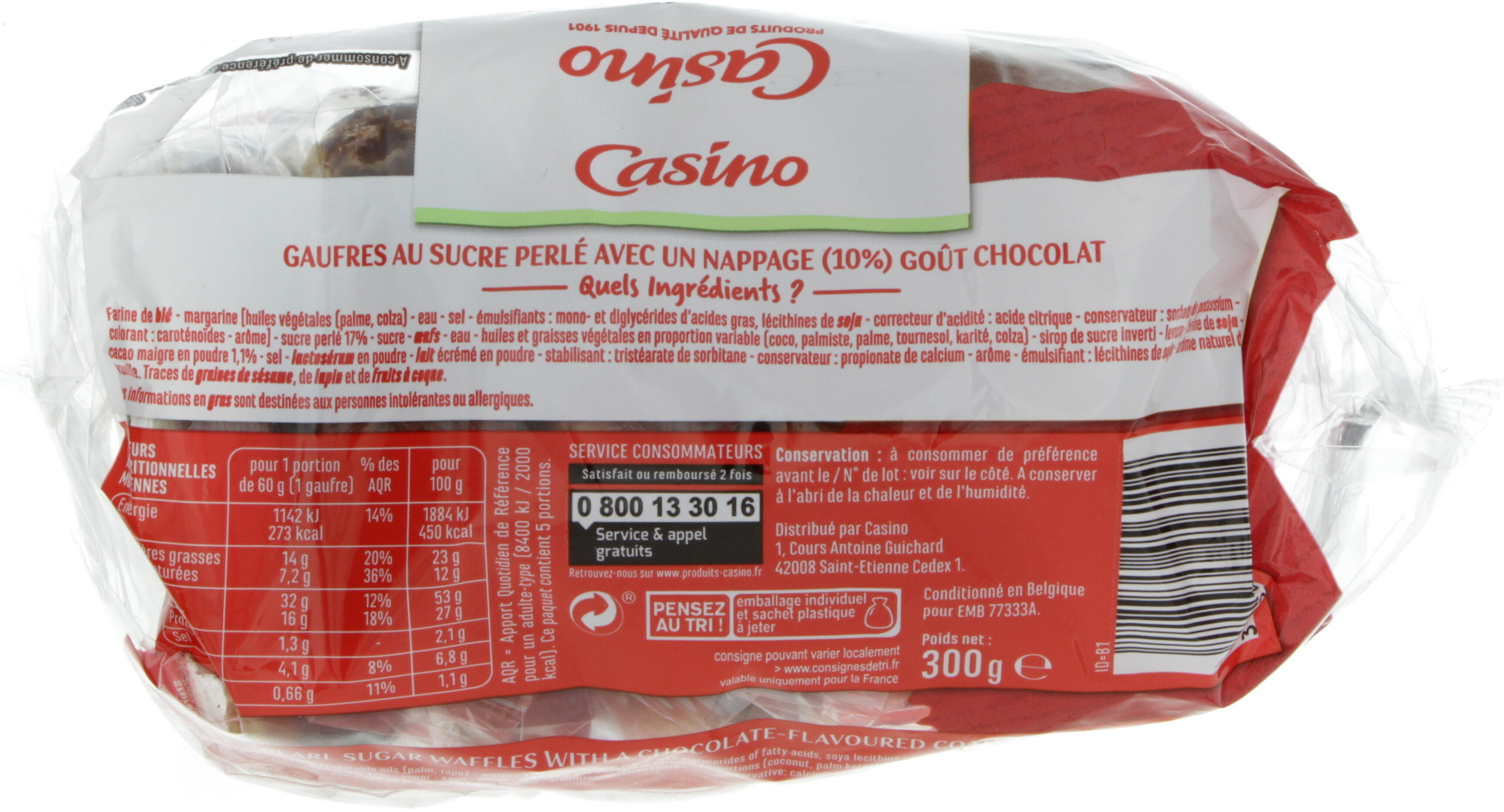Gaufres liégeoises au chocolat et aux perles de sucre - Casino - 300 g
This product page is not complete. You can help to complete it by editing it and adding more data from the photos we have, or by taking more photos using the app for Android or iPhone/iPad. Thank you!
×
Some of the data for this product has been provided directly by the manufacturer casino.
Barcode: 3222475456114 (EAN / EAN-13)
Common name: Gaufres aux perles de sucre avec un nappage goût chocolat (9%)
Quantity: 300 g
Brands: Casino
Categories: Snacks, Sweet snacks, Biscuits and cakes, Pastries, Waffles, Chocolate coated waffles, Plain Brussels-style soft waffle
Labels, certifications, awards:
Green Dot
Traceability code: EMB 77333A - Nemours (Seine-et-Marne, France)
Stores: Casino
Countries where sold: France
Matching with your preferences
Environment
Carbon footprint
Packaging
Transportation
Threatened species
Other information
Conservation conditions: A conserver à l'abri de la chaleur et de l'humidité.
Recycling instructions - To discard: emballage individuel et sachet plastique
Report a problem
Data sources
Product added on by kiliweb
Last edit of product page on by quentinbrd.
Product page also edited by beniben, casino, casino-off, openfoodfacts-contributors, org-casino, roboto-app, teolemon, yuka.ZElzblNwc0g5Nmt6Z3NRajhnalExdGR1ekxhamVrTG1CN1l4SUE9PQ.










